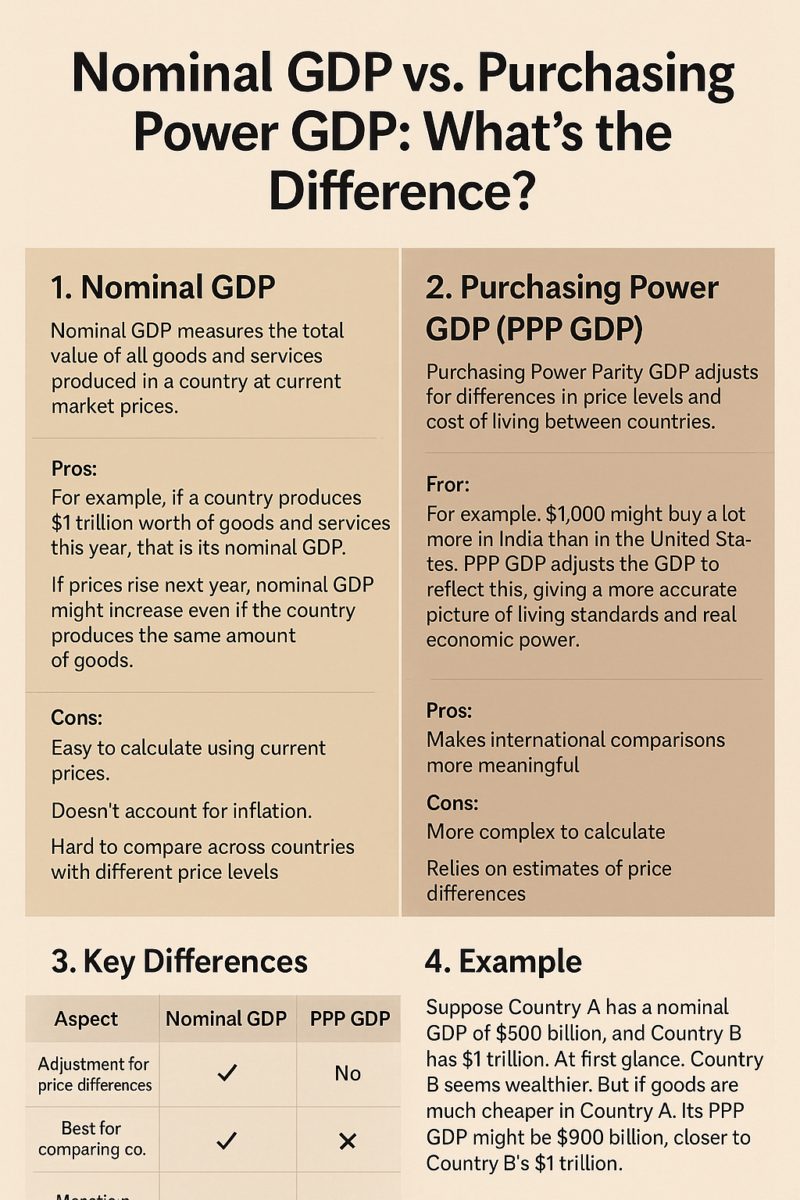When discussing a country’s economic size or comparing economies, you’ll often hear the term GDP, or Gross Domestic Product. But did you know there are different ways to measure it? Two of the most common methods are Nominal GDP and Purchasing Power GDP (PPP GDP). Understanding the difference is crucial for interpreting economic data correctly.
1. Nominal GDP
Nominal GDP measures the total value of all goods and services produced in a country at current market prices. It doesn’t adjust for inflation or cost of living differences between countries.
For example, if a country produces $1 trillion worth of goods and services this year, that is its nominal GDP. If prices rise next year, nominal GDP might increase even if the country produces the same amount of goods.
Pros:Easy to calculate using current prices.Useful for tracking growth over time within a single country.
Cons:Doesn’t account for inflation.Hard to compare across countries with different price levels.
2. Purchasing Power GDP (PPP GDP)
Purchasing Power Parity GDP adjusts for differences in price levels and cost of living between countries. Essentially, it asks: How much would you need to spend in one country to buy the same basket of goods and services as in another country?
For example, $1,000 might buy a lot more in India than in the United States. PPP GDP adjusts the GDP to reflect this, giving a more accurate picture of living standards and real economic power.
Pros:Makes international comparisons more meaningful.Accounts for differences in cost of living.
Cons:More complex to calculate.Relies on estimates of price differences.
Conclusion
Both Nominal and PPP GDP are useful, but for different purposes. Nominal GDP is better for tracking market growth, while PPP GDP gives a more realistic view of living standards and purchasing power across countries. Knowing the difference helps you interpret economic statistics without being misled by price levels or currency differences.

